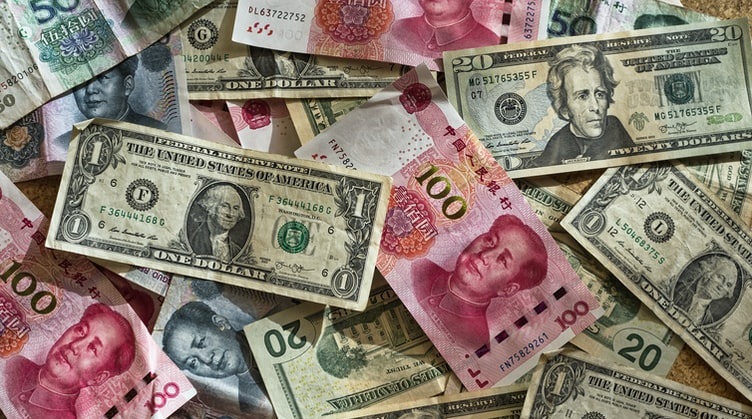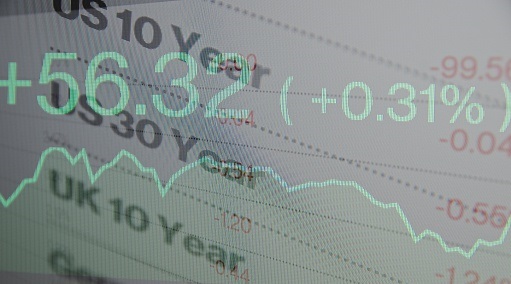Market Update
The fact that the US Senate voted in favour of US President Joe Biden’s $1.9T “rescue” package over the weekend (which was passed using a process called budget reconciliation, meaning no Republican votes were needed) has not triggered a notable improvement in the market’s appetite for risk on Monday morning. European equities are admittedly a little higher as they play catch up to gains seen on Wall Street last Friday (after European equity markets had closed), but US equity index futures point to a soggy start to the week, with S&P 500 futures down 0.6% and Nasdaq 100 futures down 1.5% amid underperformance in large tech names.
The US bond yields, which did not see much movement last Friday despite the blowout US Labour Market Report, are heading higher on Monday morning (10-year yields are up just over 4bps to around 1.60%) and this seems to be weighing on equities. Note that stocks that have high price to earnings ratios (like a lot of the big tech names and “bubble” stocks like Tesla) are more susceptible to rising long-term interest rates. Some market commentators are attributing today’s upside in US bond yields to “inflation concerns” after the Senate passed Biden’s stimulus package.
In terms of FX, the pickup in yields is again benefitting the US dollar; the DXY, which started the week in the 91.80s, has now comfortably reclaimed the 92.00 level and is back at its highest levels since late last November. Technically speaking, the next key level that the bulls will have in sight is the 200-day moving average at 92.964. To the downside, support in the form of the early February highs at just above 91.50 is worth also keeping in mind. Analysts continue to believe that if US yields continue to rally, USD is likely to continue to strengthen, particularly versus its lowest yielding counterparts (EUR, JPY, CHF).
Turning to commodities; WTI is currently flat and trading just above the $66.00 level, having dropped back sharply from overnight highs of just under $68.00 – crude oil prices spiked at the reopen of trade this week on the news that Saudi Arabian oil infrastructure had been targeted by Yemeni based Houthi militia forces. No infrastructure has reportedly been damaged, however. Expectations for a strong global demand recovery and last week’s bullish OPEC+ developments look set to keep crude oil markets supported, despite weakness in equities. Elsewhere, precious metals are broadly under pressure amid rising yields with spot gold now trading in the $1680s, down about three quarters of a percent on the day.
Rest of the G10


Photo by Eric Prouzet.
GBP is the outperforming currency this morning, with GBPUSD holding comfortably above the 1.3800 handle and ranging between there are the 1.3850s. Meanwhile, EURGBP is softer, having dropped below 0.8600 overnight and now heading back towards February’s 0.8540 lows. There does not seem to be any particular news of theme driving GBP outperformance this morning apart from maybe familiar themes; UK Covid-19 infection and death rates continue to head lower (whilst they unfortunately rise in the EU) and UK health officials remain confident in the UK’s timetable to reopening despite new Covid-19 variants. YouGov reported that UK consumer confidence is at its highest level since the start of the pandemic, with this level set only to rise in the coming weeks as the economy reopens.
Elsewhere, comments from BoE Governor Bailey this morning was in fitting with his recent rhetoric; he reiterated that just because the bank has added negative interest rates to its policy toolkit does not mean that the bank is definitely going to use them. Moreover, the governor said that he expects the bank’s next unemployment forecast to be a little more optimistic, while the next inflation forecast will be moved a little higher in the short-term.
NZD, meanwhile, is the G10 underperformer this morning, with NZDUSD having slipped nearly all the way back to last Friday’s post-NFP lows around 0.7110, down about 0.6% on the day versus the dollar. In a similar vein to GBP outperformance, no clear theme is behind the kiwi’s woes; perhaps some positioning ahead of Q4 2020 New Zealand manufacturing sales data this evening.
Strong February Chinese trade data released over the weekend, which showed YoY exports growth up 60.6% (expectations were for an annual growth rate of closer to 40%), has failed to lift sentiment in either NZD or AUD. The latter is down about 0.3% on the day versus the buck, with AUDUSD for now holding above 0.7650 but having slipped from overnight highs above the 0.7700 level.
The strong annual rate of Chinese export growth in February was in part driven by weak base effects (this time last year, Chinese exports cratered due to global economic lockdowns and trade restrictions). However, the MoM rate of export growth also appears to have rocketed, with the countries monthly trade surplus surging to an all-time high at $103.25B – as economies around the world (most notably the US) implement massive fiscal stimulus that amounts to spending that is well beyond the productive capacity of their own (partially still locked down) economies, goods need to be imported to make up the short-fall, hence why Chinese trade is doing so well right now. CNY is focused on the stronger US dollar amid higher bond yields, however, and is about 0.5% weaker on the day versus the buck.
Finally, EUR, CAD and JPY are all down roughly 0.3-0.4% on the day versus the dollar, as each conform to USD flows rather than trading off of any domestic themes or fundamentals. The latest EU Sentix Index survey (for March) was released this morning and came in a little stronger than forecast at 5.0 versus expectations for 1.9, but the euro has not taken any notice, with weaker than expected German and Spanish industrial output numbers for January taming any optimism. EURUSD lost its grip on the 1.1900 level overnight and is ploughing its way down towards 1.1850. USDJPY, meanwhile is back at last Friday’s highs in the 108.60s and USDCAD it is flirting with the 1.2700 level.
Day Ahead
The ECB will release its weekly net PEPP data at 1445GMT/0945EDT, i.e. the amount of bonds it bought last week. ECB officials have recently been jawboning about the “flexibility” of the PEPP (which stands for pandemic emergency purchase programme) in the context of keeping upwards pressures on European bond yields under control. The fact that, despite all this jawboning, ECB PEPP purchases fell last week came as a surprise to markets (some minor EUR strength was witnessed at the time). Market participants will be keeping a keen eye on this week’s numbers to see if the ECB opted to accelerate purchases and “send a message” to markets that they plan to “walk the talk” with regards to buying more bonds to keep yields low.
Otherwise, the calendar is pretty light; out of the US at 1500GMT/1000EDT we have the release of the Conference Board’s Employment Trends Index for February and Wholesale Trade Sales and Inventories data for January. The Asia session will get a little more interesting with New Zealand Manufacturing Sales at 2145GMT/1645EDT and then Japanese Q4 2020 GDP at 2350GMT/1850EDT.




